Harnessing AI: Balancing Risks and Opportunities in the Global Economy
As industries spanning healthcare, logistics, and beyond embrace artificial intelligence, the Hiroshima AI Process puts much-needed guardrails in place to manage the risks of innovation.
As Japan draws global interest for its potential to become a hub for Artificial Intelligence, the nation has taken the lead to ensure the world pursues innovation with safety in mind.
Among the leading companies that have their eyes on Japan, OpenAI opened its first Asia office in Tokyo this April.1 Nvidia aims to build an AI ecosystem in Japan.2 And Microsoft plans to invest $2.9 billion in AI and cloud infrastructure and expand its digital skilling programs to provide AI training for more than 3 million people.3
While an influx of technology companies bodes well for the economy, the growth of AI in Japan — and globally — carries risks. Scientists at the Center for AI Safety, for example, underscored the need for prudence: “Mitigating the risk of extinction from AI should be a global priority alongside other societal-scale risks such as pandemics and nuclear war.”4
Recognizing the need to build and promote global governance on AI to address the risks, Japan launched the Hiroshima AI Process in May 2023 under its G7 presidency. It’s the first international framework and includes both the Hiroshima Process International Guiding Principles and the Hiroshima Process International Code of Conduct, which promote safe, secure, and trustworthy advanced AI systems.
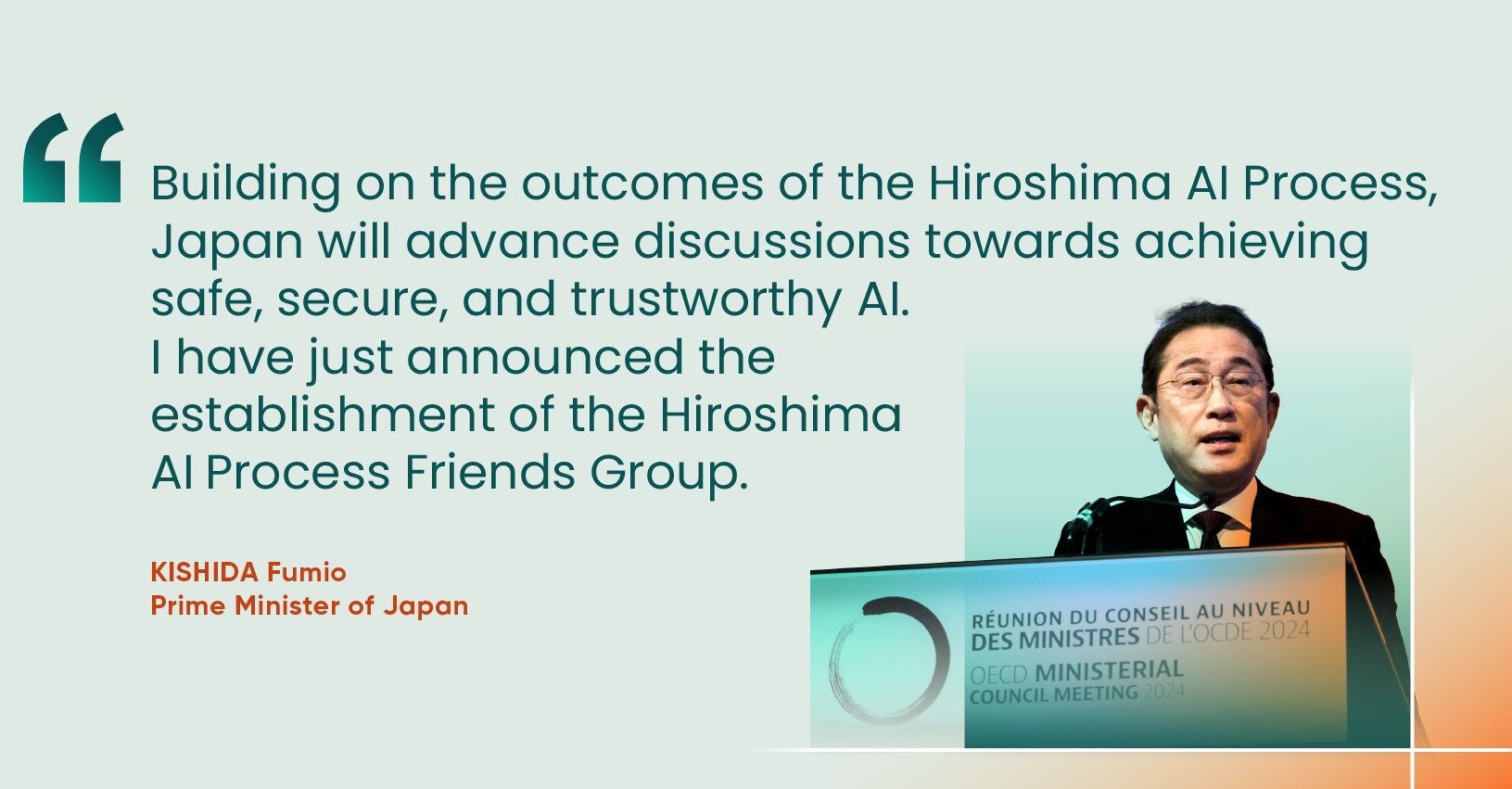
The Guiding Principles call on AI developers to identify, evaluate, and mitigate the risks of advanced AI systems across the entire lifecycle from design and development to deployment.5 And the Code of Conduct lists in more detail the actions that AI developers should abide by, specifying examples ranging from health risks to cyberthreats.
The Hiroshima AI Process emphasizes collaborative international efforts to ensure AI safety, including regular assessments and updates to guidelines as the technology evolves. It also encourages sharing best practices among stakeholders . These measures aim to build a robust foundation for AI governance that prioritizes human welfare.
As of May 2, 2024, some 49 countries and regions have participated in the Hiroshima AI Process Friends Group — a voluntary framework of countries supporting the spirit of the Hiroshima AI Process.6
Domestically, the Ministry of Internal Affairs and Communications and the Ministry of Economy, Trade and Industry jointly published ‘AI Guidelines for Business Ver1.0’ in April 2024, reflecting the deliverables of the Hiroshima AI Process.

In few places does AI show more potential than healthcare. Improved diagnostics, greater accuracy, and the development of new medicines stand among the benefits. Yet access to sensitive patient data carries substantial risks.
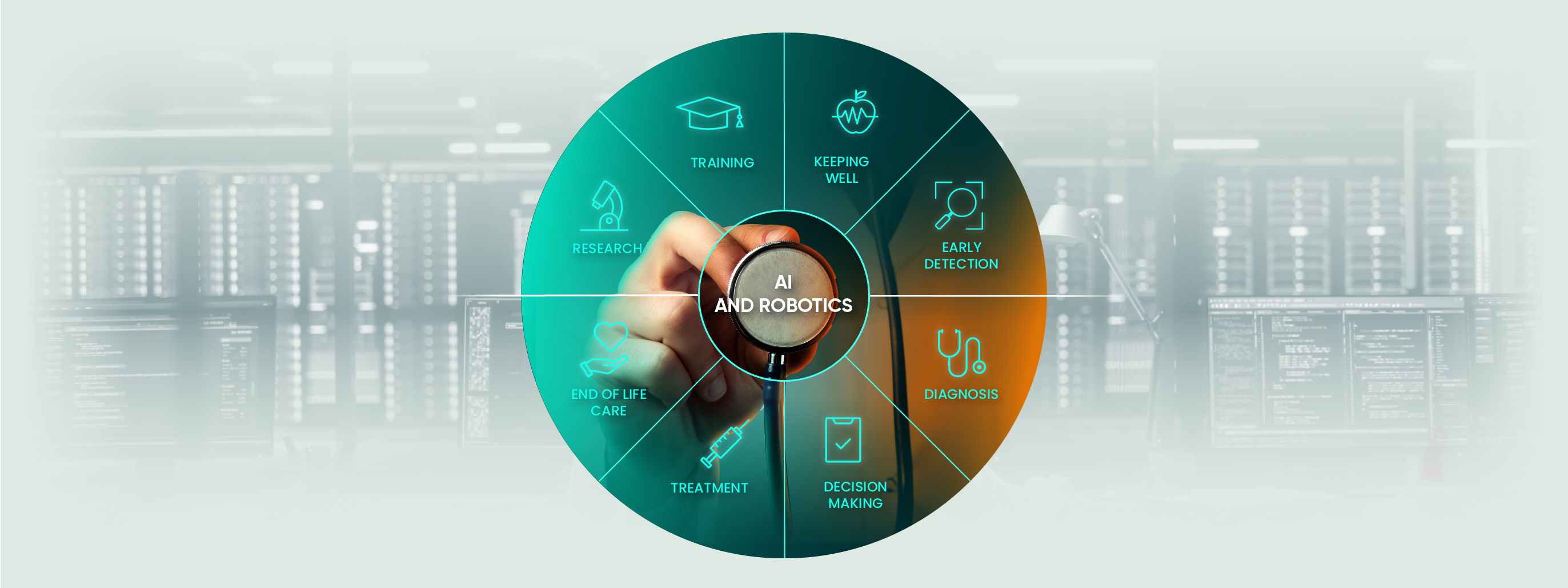
Japanese startup Anaut designed its AI-powered surgical support system, EUREKA α, with risk management in mind. EUREKA helps surgeons identify critical structures, such as connective tissue and the pancreas, during laparoscopic and robot-assisted surgeries in the stomach, large intestine, and for hernia repair. Identifying which structures to dissect and preserve ultimately leads to safer surgeries.
“We ensure the integrity of our data by collecting it only from hospitals with which we have completed an institutional review board approval process,” says Sakiko Tamatani, Head of Sales & Marketing at Anaut. “To measure and maintain the accuracy of our AI, we periodically have external expert doctors review its performance.”
EUREKA is one of several AI-powered technologies that could significantly enhance healthcare. As more technologies reach the stage of practical application, Anaut’s approach to risk provides a strong industry benchmark — as evidenced by its reflections on the Hiroshima AI Process.
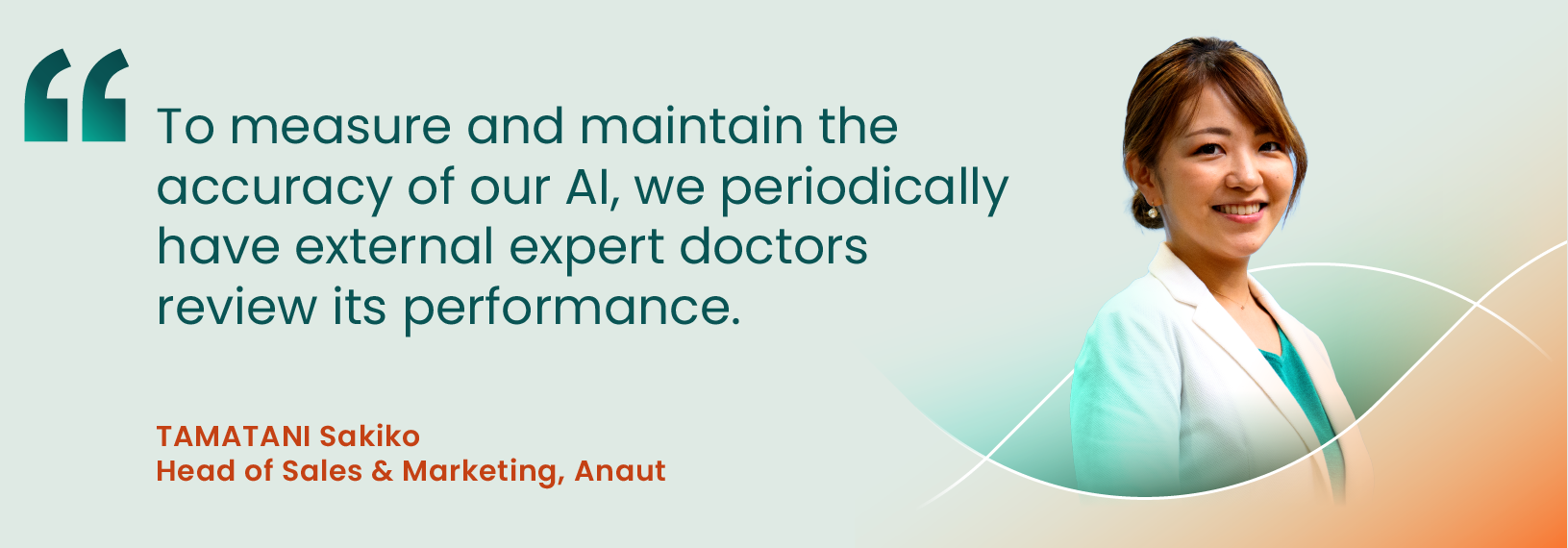
“In light of the Japanese government's and the G7’s commitment to the AI process framework, we have taken the opportunity to re-evaluate our technology and business,” Tamatani says. “This has prompted us to reflect on important questions, such as, ‘Are we truly addressing the needs of all patients comprehensively?’ and ‘Are we sufficiently accountable to surgeons worldwide?’”
Both questions are important given Anaut’s plans to deliver EUREKA to operating rooms globally. The company’s innovation underscores the power and potential of AI in healthcare. Through effective and responsible risk management, Anaut and other AI-powered healthcare companies could quickly revolutionize the industry.7
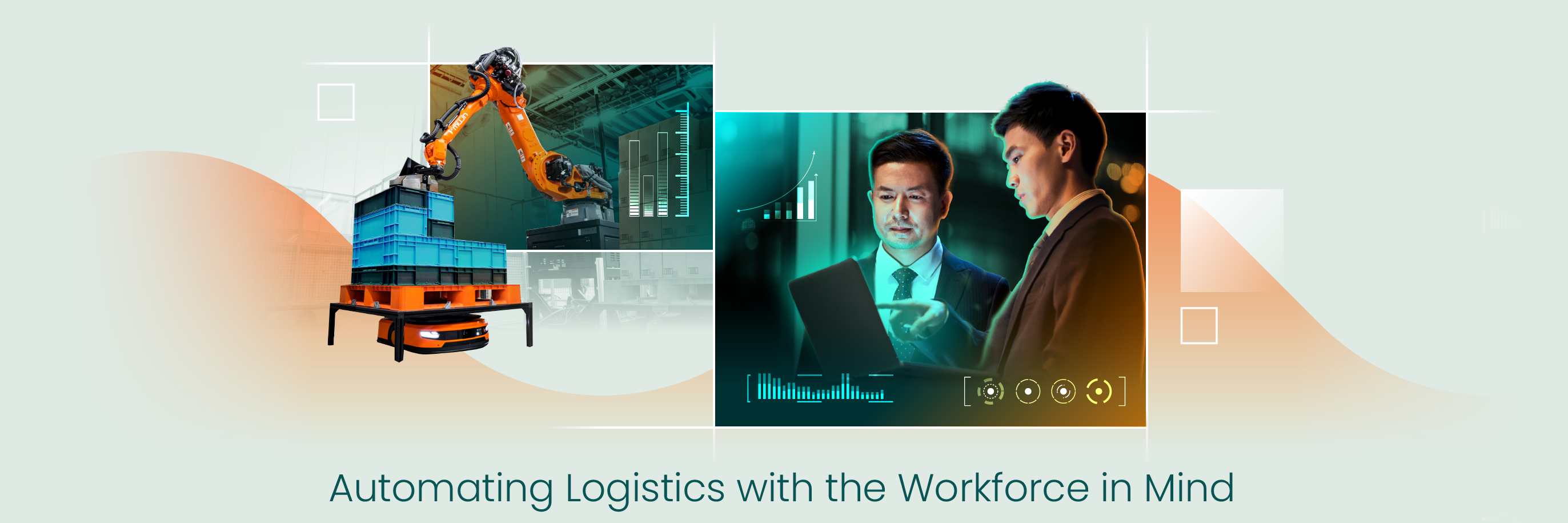
The Japanese Government forecasts a 20% decline in the nation’s labor force by 2040 due to an aging population and low birth rates.8 Other countries including South Korea and Italy face similar challenges.
AI-powered robots could help cover labor shortfalls, ushering in the next wave of automation. Estimates from Goldman Sachs suggest that Generative AI could replace up to 300 million jobs globally.9 Job losses will be felt across a broad spectrum of professions, leaving several industries to cope with accelerating workforce changes. Thus companies embracing AI must upskill and create new opportunities for potentially displaced workers.
AI-powered industrial robots software from Japanese startup Mujin, for example, reduce the need for physical labor, partially filling a gap created by Japan’s shrinking workforce. Instead of replacing humans completely, the robots make them available for different types of work.
“As manpower shortages become increasingly severe, Mujin's intelligent robots and unmanned guided vehicles are playing a role in replacing people for simple, heavy-muscle labor and dangerous tasks,” says Mujin’s CEO and Co-Founder Issei Takino. “This frees people up to focus on high value-added tasks that only people can perform.”
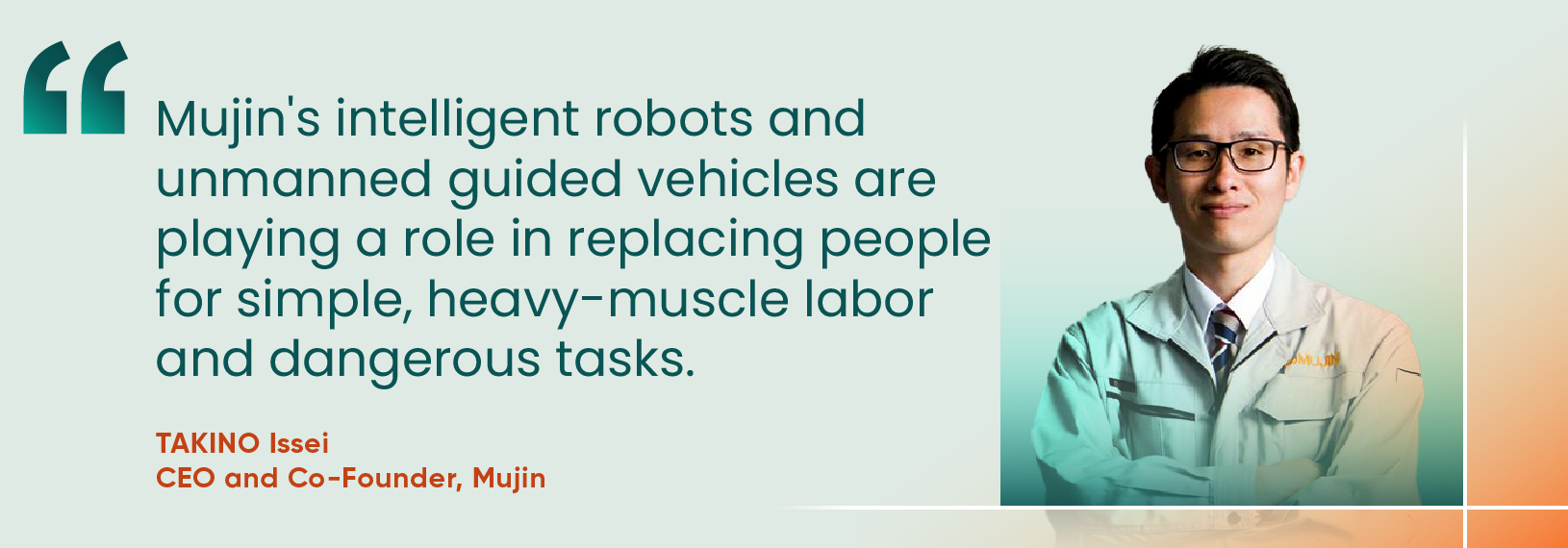
Mujin’s Machine Intelligence enables robots to make optimum decisions in real time, quickly observing an object and the surrounding environment, then determining the best course of action to complete the task. For example, many existing robots require extensive programming for tasks like stacking boxes on a pallet. Mujin’s robots use Machines Intelligence real-time motion planning technology calculate through movements, adapt to the environment, and stack boxes without additional programming.
“We build our advanced robot systems by integrating information from dozens of different sensors, including 3D vision cameras and force sensors, and calculating the optimum robot motion path in real time according to the task,” Takino says.
The potential for job displacement will grow as capabilities among intelligent robots improve. While the Hiroshima AI Process does not explicitly address issues around the labor market, other G7 nations, including the UK, have expressed the need to prepare for shifts as the destruction and creation of jobs creates a skills gap.10
Through cross-border collaboration, the world can address the risks and harness the power of AI to realize great benefits. Getting that right starts with the framework that Japan and the other G7 set out in the Hiroshima AI Process.

